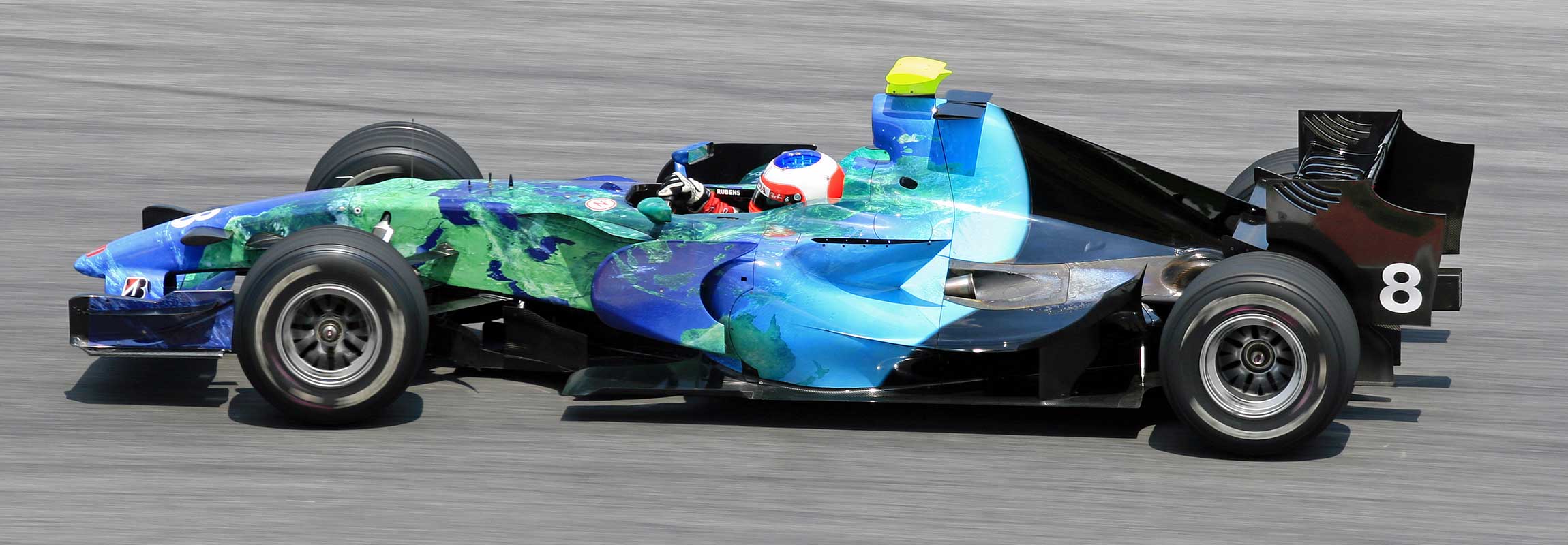

Some people see motorsports as a frivolous waste of fuel and money, while others recognize the value in pushing the envelope to see just how fast or efficient a motor vehicle can become. Technological advances (e.g., rearview mirrors, disc brakes, the aerodynamics of modern cars) are often discovered first on the racetrack, with the best ideas trickling down and being incorporated into passenger vehicles.
A prime example is Formula One racing, which first allowed racecars to incorporate a Kinetic Energy Recovery System (KERS) to improve acceleration and fuel efficiency in 2009. The French 24 Hours of Le Mans, the world’s longest-running sports car endurance race, followed suit, and a hybrid car with KERS dominated in 2012.
![]()
KERS is beginning to make its way into many forms of transportation, including road haulage and passenger cars. Some manufacturers and researchers are even beginning to experiment with KERS-enhanced motorcycles and bicycles.
How KERS and ultracapacitors work together
The simple explanation of how a KERS works is that it stores the energy generated during braking and then uses that stored energy to accelerate. Ultracapacitors are ideal for KERS because of their ability to charge and discharge rapidly.
If you are wondering why ultracapacitors are better for KERS than batteries, consider the following: Imagine you're holding a full water bottle and you have to empty it as fast as possible. Now imagine you have a glass of water in your other hand and you have the same objective of emptying it as fast as possible. The water bottle, representing the battery, will give a steady output for a long time, whereas the glass, the ultracapacitor, can be emptied (or filled) in a very short time. That's one of the advantages ultracapacitors have over batteries.
Hybrid systems are most effective when they incorporate ultracapacitors into their design, because ultracapacitors offer several advantages over batteries:
- Ultracapacitors are less sensitive to extreme heat or cold than batteries, and don’t lose their charge when stored for long periods of time.
- Ultracapacitors work well in parallel with batteries by maintaining a level power load during charge and discharge. This reduces the strain on the battery and prolongs battery life.
- Unlike batteries, ultracapacitors can undergo more than a million lifecycles without significantly impacting their performance or lifespan.
- Ultracapacitors and ultracapacitor modules are far lighter and require less space than batteries in high-power applications.
The benefits of ultracapacitors in motorsports
With some motorsport categories limiting the amount of fuel that can be used, any technology that saves fuel provides a competitive advantage. Regenerative braking allows the vehicle to absorb the kinetic energy during braking (e.g., when slowing, stopping, or traveling down a mountain) and release that same energy when accelerating, thus reducing fuel consumption. Since less fuel is burned during a race, fewer greenhouse gases are released into the atmosphere. Instead of motorsports being seen in a negative light, KERS and ultracapacitors are viewed as enablers of modern green technology.
Some races set a limit on how much fuel a driver can use as a way to encourage the development of more fuel-efficient designs. Racecar designers do everything they can to reduce the weight of the car, because it allows the car to accelerate faster and consume less fuel.
Ultracapacitors deliver up to 60 times more power for weight compared to lithium-ion batteries. The difference between winning a race and finishing in the middle of the pack is often a matter of a few milliseconds. Unlike batteries, ultracapacitors charge almost instantly and can provide a burst of power when accelerating off a curve or up to the finish line.
Check out our infographic on the differences between supercapacitors and batteries





